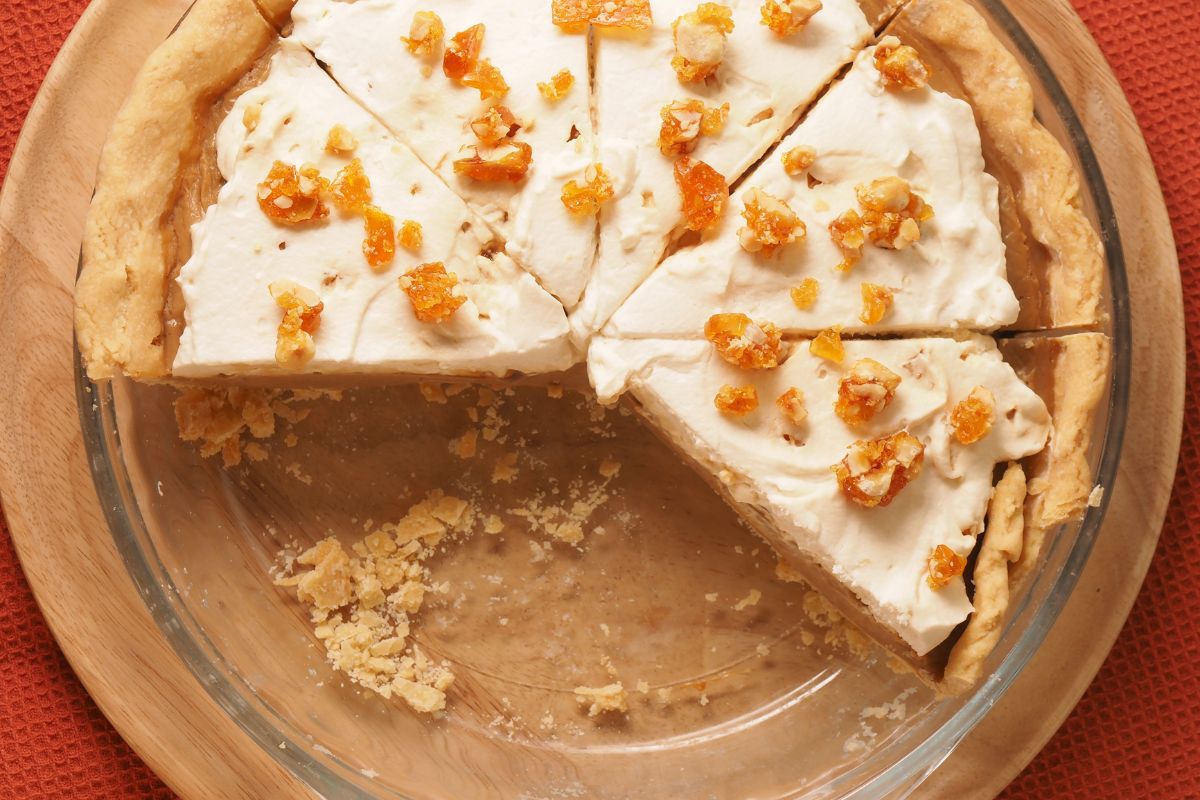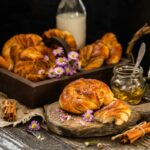Have you ever sat at home or just finished a meal and began craving something super sweet?
Maybe you’re a great fan of caramel candies and want something similar to sate your needs?

Well, one of your possible options is butterscotch! Those with a sweet tooth however may not know what it is.
It’s a blended mix of both brown sugar and butter. You may be thinking – isn’t that just caramel though?
No! They are different things, and that will be something we will explore in this guide.
Read on to learn more about one of the most favorite treats in the country!
So What Is Butterscotch?
Butterscotch is one of the most enjoyed and widely loved candies in the world.
It’s made with a blend of both butter and brown sugar and is often used in desserts like cookies, cake frostings and ice creams.
On top of this, you can find small butterscotch candies, butterscotch sauces and even toppings for savory treats like chips.
Despite its name, the “scotch” part of butterscotch does not refer to Scotland.
It actually links in to its creation process, whereby scotching, which means to score or cut something is done.
Butterscotch is poured out when very hot and allowed to cool and then scotched to break it all up into more manageable pieces afterwards.
What Can I Use Butterscotch In?
As we mentioned, there are so many different desserts and even some savory things you can use butterscotch in or on.
It’s very common to see butterscotch candies in restaurants or in grocery stores.
These are typically small – about the size of a dime. They are usually wrapped in plastic or foil and placed into bowls.
While they are very sweet, some restaurants place these candies in bowls before a meal to prepare restaurant goers for a bigger meal.
Aside from candies though, butterscotch is a very popular sauce for use on top of ice creams and sundaes.
Other people may decide to use butterscotch in things like puddings such as cakes and pies.
How Does Butterscotch Taste?
Butterscotch is a very sweet choice. The flavor actually increases and develops over the course of it being made, due to the alteration in temperatures.
Essentially, the flavor is incredibly similar to toffee or caramel because it is made with the use of caramelized sugars.
However, all of these dessert favorites have their own distinct differences.
Let’s explore these differences in more detail.
The Difference Between Butterscotch And Caramel
It is quite understandable that people would be confused over the differences between butterscotch and caramel.
Both are made by cooking sugar and both come out as a very sticky, golden liquid until they are cooled.
However, there are differences.
Caramel
Normal or plain caramel is made by utilizing white granulated sugar.

Along with this sugar, corn syrup and water is mixed and then heated up until the sugar dissolves entirely.
This mix is then allowed to boil further until the syrup becomes a golden brown liquid.
This liquid is then added to further with cream, butter, vanilla extracts and a small amount of water and then heated once again.
When caramel is being made, the temperature plays a huge role because the higher the temperature is set, the more set the caramel will be overall.
Butterscotch
The main difference between caramel and butterscotch is the sugar that is used in the recipe.
While caramel uses white sugar, classic butterscotch is made using brown sugar.
Once again, the temperature plays the biggest role in the overall finished product.
Generally speaking, butterscotch will be boiled and unboiled over and over again until the desired effect is achieved.
Toffee
Toffee holds many similarities with caramel and is also made using butter and sugar, but it is cooked for a lot longer than caramel. This allows the toffee to become very brittle but also solid.
Like butterscotch, toffee is used in many desserts and is often covered with additional sweet treats like nuts or chocolate.
Is Butterscotch Good For You?
Butterscotch is made with sugar and butter. As a result, it is very high in calories and of course, high in sugar.
Too much sugar is not good for you. It can lead to several health problems including heart disease, diabetes and obesity.
Not to mention, it can severely harm your teeth.
As butterscotch is very high in calories, it can quickly and easily lead to obesity – especially when butterscotch is added to things like cakes or ice cream, which increases the calories massively.
There’s nothing wrong with enjoying butterscotch as part of a balanced and healthy diet though – so feel free to chow down, just not all the time!
Points To Remember When Making Butterscotch
It’s very important that you start by cooking with brown sugar before you decide to add cream or milk.
This is because if you heat up the milk or cream before this process is complete, it can be quite easy for the dairy to curdle, which will ruin all of the recipe and make you start all over again.
A common thing that people note when they are making butterscotch is that the mixture appears extremely runny.
However, you will notice that when the mixture begins to cool down, the consistency becomes more solid.
Who Invented Butterscotch?
The origins for butterscotch come from the United Kingdom.
A Doncaster, Yorkshire resident named Samuel Parkinson is credited with the invention of butterscotch as far back as 1817.
The Bottom Line
Butterscotch is one of the most popular candies and dessert additions in the world.
While it holds many similarities to toffee and caramel, there are many differences to remember which give them their own distinctions.
If you follow a great recipe and remember some of these points, you’ll make some fantastic butterscotch!
- How To Reheat A Cheesesteak - November 5, 2023
- What Are Three Must Have Kitchen Knives? - September 22, 2023
- How To Protect Edges Of Pie Crust - June 15, 2023








